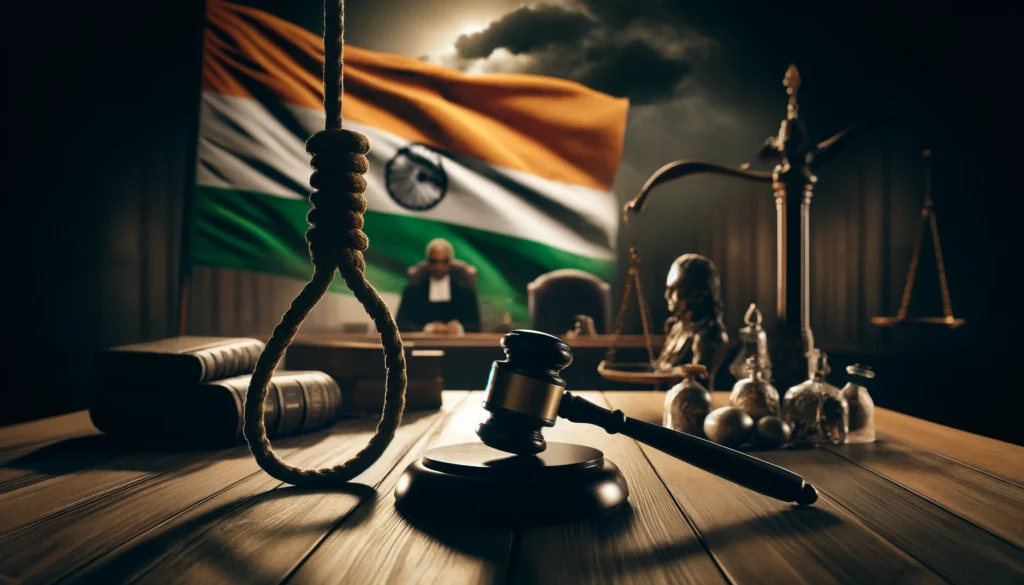Published on: 25th October 2025
Authored by: Tithi Adhikary
Madhusudan Law University
Abstract
Bail is a cornerstone of criminal jurisprudence, embodying the principle of “innocent until proven guilty” and safeguarding individual liberty. In India, bail law has evolved through constitutional guarantees, statutory enactments, and judicial pronouncements. Despite these legal safeguards, issues such as denial of bail, prolonged pre-trial detention, and misuse of judicial discretion persist. This article provides an in-depth analysis of India’s bail framework, examines judicial and legislative interventions, highlights systemic challenges, and proposes reforms to harmonize liberty and justice. Comparative perspectives from the United States, the United Kingdom, Canada, and other jurisdictions are included to suggest pragmatic improvements. By situating bail within broader socio-legal and human rights contexts, this study emphasizes the necessity of balancing the individual’s right to liberty with the demands of societal protection and the integrity of criminal investigations.
Introduction: The Constitutional Imperative of Bail
Bail is not merely a procedural mechanism but a manifestation of the constitutional guarantee of personal liberty under Article 21 of the Indian Constitution. It functions as a critical safeguard against arbitrary or prolonged detention before trial, upholding the principle of presumption of innocence. Historically, courts treated bail as an exception, reflecting a punitive approach to pre-trial release. However, evolving constitutional jurisprudence has transformed the landscape: bail is increasingly seen as the norm, while pretrial detention should remain an exception, applied only under compelling circumstances.
India faces a significant challenge with its pretrial detention system. According to the National Crime Records Bureau (NCRB) 2024, approximately 68–70% of the country’s prison population comprises undertrial detainees. Many of these individuals remain incarcerated for months or even years without conviction, due to procedural delays, inefficiencies in case management, or lack of legal representation. This overcrowding strains prison infrastructure, increases public expenditure, and perpetuates social injustices, particularly affecting marginalized and economically disadvantaged communities.
The Supreme Court in Maneka Gandhi v. Union of India (1978) expanded the interpretation of “procedure established by law,” emphasizing that procedural safeguards must be fair, just, and reasonable, thereby creating a constitutional foundation for liberal bail policies. Similarly, Articles 14 and 22 bolster protections against arbitrary arrest and detention, guaranteeing equality before the law and the right to be informed of the grounds for arrest.
Bail, therefore, is not merely a procedural formality but a fundamental instrument of justice, embodying both humanitarian and constitutional imperatives. It seeks to reconcile the tension between liberty and societal interest, ensuring that the justice system operates without undue harm to the accused.
Historical and Legal Framework
The legal framework governing bail in India is primarily codified under the Code of Criminal Procedure, 1973 (CrPC). The CrPC classifies offenses into bailable and non-bailable categories. For bailable offenses, bail is generally a right, and the court is obliged to grant it, subject to compliance with basic conditions. In contrast, non-bailable offenses entail judicial discretion, requiring the court to assess factors such as the seriousness of the offense, likelihood of flight, potential interference with evidence, and risk to public safety.
Historically, the concept of bail in India traces back to the colonial CrPC of 1898, which reflected a limited concern for individual liberty and prioritized administrative control over punitive measures. Post-independence, the 41st Law Commission Report (1969) recommended reforms to introduce a more humane approach to pretrial detention, resulting in the comprehensive CrPC of 1973. Subsequent Law Commission reports, including the 268th Report (2017), have repeatedly highlighted the need to reduce undertrial populations, promote non-monetary bail options, and ensure consistent judicial practice.
Judicial pronouncements have further shaped the legal understanding of bail, reflecting the evolving constitutional and human rights discourse in India. The courts have emphasized that liberty should not be denied lightly, particularly where alternative mechanisms such as sureties, conditional release, or supervision can safeguard the interests of justice.
Landmark Case Law Analysis
Several landmark Supreme Court decisions illustrate the evolution of bail jurisprudence and the courts’ balancing of individual liberty with public interest:
- State of Rajasthan v. Balchand (1977): Bail should be refused only if release would obstruct investigation or facilitate tampering of evidence. Mere gravity of the offense is insufficient to deny bail.
- Hussainara Khatoon v. State of Bihar (1979): Emphasized the right to a speedy trial under Article 21, highlighting that prolonged detention without trial is unconstitutional.
- Gopalan Nair v. State of Kerala (1955): Asserted that seriousness of the offense alone cannot justify withholding bail; judicial discretion must consider proportionality and individual circumstances.
- Gurbaksh Singh Sibbia v. State of Punjab (1980): Advocated liberal grant of bail unless compelling reasons, supported by evidence, exist to deny it.
- Sanjay Chandra v. CBI (2012): Addressed economic offenses, emphasizing careful balancing of liberty with societal protection, demonstrating the nuanced approach required in financial crimes.
- Satender Kumar Antil v. CBI (2022): Reinforced procedural safeguards, timely hearings, and judicial responsibility to prevent arbitrary arrests.
- Arnab Manoranjan Goswami v. State of Maharashtra (2020): Reaffirmed that personal liberty is paramount and cannot be curtailed without substantial justification.
Collectively, these decisions underscore the judiciary’s recognition of the primacy of liberty, while balancing societal interests, law enforcement imperatives, and the need for procedural fairness.
Challenges in the Bail System
Despite constitutional and statutory protections, the bail system in India faces significant systemic challenges:
- Overcrowding and Undertrial Burden: NCRB 2024 reports indicate that nearly 68% of India’s prison population comprises undertrial detainees. This highlights delays in judicial processes, inefficient case management, and logistical constraints.
- Economic Disparities: Monetary bail requirements often criminalize poverty. Many indigent accused cannot furnish the requisite surety or bond, leading to prolonged detention solely due to financial incapacity.
- Inconsistent Judicial Discretion: Absence of detailed statutory guidelines leads to variability across courts, resulting in unequal application of bail principles.
- Procedural Delays: Backlogs, limited availability of legal counsel, and inadequate court infrastructure contribute to extended pretrial detention.
- Risk of Abuse and Police Misconduct: Discretionary powers, if unchecked, may facilitate custodial abuse, coercion, or intimidation, particularly for marginalized communities.
These systemic deficiencies not only compromise liberty but also perpetuate social inequities and undermine public confidence in the criminal justice system.
Procedural Reforms and Alternatives to Bail
To alleviate the challenges of pretrial detention, India has introduced several procedural reforms:
- Anticipatory Bail (Section 438 CrPC): Protects individuals against arrest in cases where there is apprehension of false or malicious charges. Its application, however, varies across states, reflecting uneven access.
- Parole and Interim Bail: Temporary release mechanisms, often granted for humanitarian reasons such as illness, family obligations, or social emergencies, are underutilized due to lack of awareness and bureaucratic hurdles.
- Non-Monetary Bail Options: Recognizance bonds, conditional release, and community supervision can reduce reliance on financial sureties and promote compliance without incarceration.
- Enhanced Legal Aid: Strengthening the Legal Services Authorities Act, 1987, can ensure effective representation for economically marginalized accused, enabling fair access to bail and reducing arbitrary detention.
Expansion of these measures, along with judicial training on human rights and procedural fairness, could substantially reduce undertrial populations and enhance equity within the criminal justice system.
Comparative Legal Perspectives
International experiences provide useful lessons for India:
- United Kingdom: The Bail Act 1976 presumes in favor of bail. Community supervision is emphasized, and custodial detention is considered only as a last resort.
- United States: Risk assessment tools evaluate flight risk and danger to society; states like New Jersey have significantly reduced reliance on cash bail. However, socio-economic bias remains a concern.
- Canada and Germany: Prioritize non-custodial measures and enforce strict timelines for pretrial detention, ensuring detention is a last resort.
- Scandinavian Countries: Minimal pretrial detention is the norm, supported by robust social services, resulting in low rates of incarceration.
These examples illustrate that risk- and evidence-based frameworks, combined with non-custodial supervision, can improve fairness and efficiency. Adapting these mechanisms to Indian socio-legal realities offers a pathway to more humane and effective bail reforms.
Legislative Reforms: Bharatiya Nyaya Sanhita 2023
The Bharatiya Nyaya Sanhita (BNS) 2023 codifies several reforms to enhance bail practices:
- Emphasizes the presumption in favor of liberty and mandates speedy release where appropriate.
- Limits detention duration before mandatory bail hearings.
- Provides special protections for vulnerable groups, including women, juveniles, the elderly, and marginalized communities.
- Enhances procedural efficiency and judicial accountability through timelines, monitoring mechanisms, and clear standards for denial of bail.
While these provisions are promising, their effectiveness depends on robust judicial training, infrastructural support, and strict monitoring mechanisms to prevent arbitrary detention.
Social and Human Rights Impact
Pretrial detention has far-reaching social consequences. Families face economic hardship, stigma, and psychological trauma, while communities lose productive members. Human rights organizations, including Human Rights Watch and the World Bank, emphasize that prolonged detention exacerbates poverty, disrupts education, and hinders reintegration into society.
Reforms prioritizing non-custodial alternatives not only uphold constitutional rights but also support restorative justice principles. By reducing unnecessary incarceration, bail reforms can mitigate social disruption, promote economic stability, and strengthen public trust in the justice system.
Recommendations
To reconcile liberty with societal protection, the following reforms are recommended:
- Comprehensive Legislation: Codify uniform bail principles, limit judicial discretion to clear statutory grounds, and define timelines for hearings.
- Non-Monetary Bail Programs: Expand conditional release, recognizance bonds, and community supervision, with pilot programs in high-overcrowding regions.
- Technology-Driven Solutions: Introduce e-bail hearings, online surety systems, and automated reminders to reduce procedural delays.
- Strengthened Legal Aid: Ensure marginalized and indigent accused have access to quality representation at all stages.
- Judicial and Police Training: Institutionalize human rights and rights-based approaches in training curricula.
- Independent Oversight: Establish mechanisms to monitor implementation, prevent arbitrary detention, and review systemic bottlenecks.
Implementing these reforms can substantially reduce overcrowding, expedite trials, and enhance the credibility of India’s criminal justice framework.
Conclusion
Bail reforms are critical to balancing India’s constitutional promise of liberty with the imperatives of justice. A rights-based approach, informed by constitutional mandates, human rights principles, and comparative practices, can transform the bail system into a more equitable, efficient, and humane framework. By prioritizing procedural fairness, transparency, and alternatives to detention, India can protect individual liberty, reduce prison overcrowding, promote social reintegration, and strengthen public confidence in the justice system.
Ultimately, the harmonization of liberty and justice through bail reform is not merely a procedural adjustment—it is a reflection of India’s commitment to constitutionalism, human dignity, and the rule of law.




